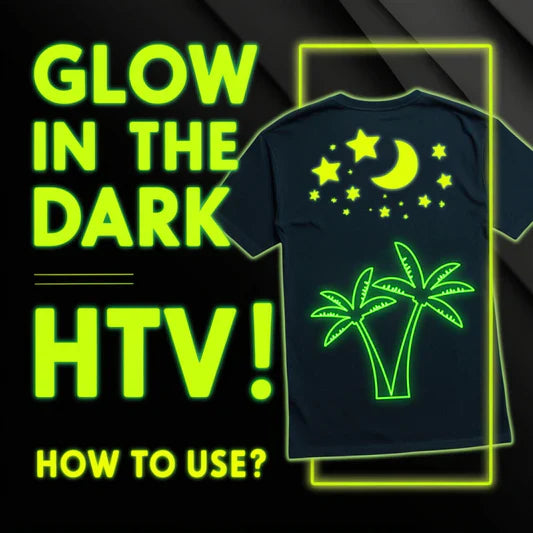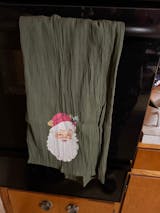Updated By Teckwrap Craft On May 24, 2025

No, you cannot iron on permanent vinyl, as too much heat can damage it and make it lose its tack. If you have to apply heat to a permanent vinyl design to reinforce it, use a heat gun or a hair dryer from a safe distance. Permanent vinyl is not the best vinyl choice for garments. Decals made with it will come off in the first wash only. Keep reading to learn more about what permanent vinyl is and the procedure for using it on fabrics.
Adhesive Vinyl
Adhesive vinyl is a thin, flexible material with a pressure-sensitive adhesive. It can easily be cut into any design and applied to smooth, clean, non-porous, and hard surfaces. It is available in a wide variety of colors and finishes. Adhesive vinyl is of two types—permanent and removable. Let’s discuss each in detail.
Permanent Adhesive Vinyl
Permanent vinyl has a robust adhesive with a very strong tack. It is durable and long-lasting, and will not fade easily, nor will it peel or crack. This sticker vinyl is ideal for outdoor use as it can brave the elements. You can also apply it to surfaces that come in contact with water often. It is commonly used for signage, drinkware, and custom home décor, ensuring durability and resistance to harsh conditions.
Decals made from permanent vinyl are sturdy and do not damage easily; however, abrasions and exposure to acidic materials can compromise their integrity. It is possible to remove permanent vinyl, but it may harm the surface it is applied to and leave residue.

Removable Adhesive Vinyl
This type of vinyl is meant for temporary and indoor applications only. It can be used as a stencil, wall decal, and for indoor signage or labels. If you are a beginner, it is advised to use removable vinyl for practice and to gain precision.

Can You Iron Permanent Vinyl On T-shirts?
No, you cannot iron on permanent vinyl on t-shirts. You can apply your permanent vinyl design without using any heat source. Heat can damage the vinyl, and it may not stick properly. In any case, it will look like a sticker on top of your t-shirt and will come off or get damaged in the first wash.
Permanent vinyl is not designed to adhere to any fabric. It is not flexible and will not move along with the shirt when worn, making it uncomfortable to wear. It will feel stiff and may crack and peel when the fabric is stretched or washed. Even if it sticks, it will be a short-lived design.
If you want a temporary decal on your t-shirt that you have to wear once, only for a few hours, say for a costume party, you can use permanent adhesive vinyl to make it and apply it to your shirt.

How To Use Permanent Vinyl On Shirts?
The process of applying a permanent vinyl design to your shirt is simple. Here are the steps:
- Finalize your design on the software that comes with your cutting machine, such as Design Space with Cricut.
- Cut and weed out extra vinyl. You can use the weeder or a weeding pen available at TeckWrap Craft.
- Apply transfer tape on the design and burnish with a squeegee.
- Place the design where you want it to be on the t-shirt and apply pressure with a squeegee, burnishing it to paste it on the fabric.
- Once you are sure the design has transferred, remove the transfer tape very slowly and carefully at an angle, keeping it closer to the surface.
You have successfully applied the permanent vinyl design to your shirt. We would like to mention again that this design will not stay long. If you want long-lasting decals on your garments, it is best to use heat transfer vinyl (HTV).

Can You Heat Press Permanent Vinyl On Wood?
No, you cannot heat press permanent vinyl on wood; however, you can apply a long-lasting permanent vinyl decal to wood without using any heat source. You can make beautiful wooden wall hangings and signs using permanent vinyl. Here’s how:
- Make sure the wood is perfectly sanded and treated with a coat of polycrylic, wood stain, or acrylic paint. This will make a smooth surface for the permanent vinyl and ensure robust adhesion of your design.
- Finalize your decal on the design software, cut, and weed out the negative vinyl from it.
- Apply transfer tape to it and burnish it with a squeegee.
- Remove the backing from the permanent vinyl and apply the decal to the wood. Rub it again with a squeegee using slight pressure to ensure adhesion.
- Slowly remove the transfer tape, and your amazing permanent vinyl design is transferred to wood to win praise from all!

Frequently Asked Questions
Q. Can you use heat on permanent vinyl?
Yes, you can apply low heat to permanent vinyl using a heat gun or a hair dryer. Keep it at a safe distance, or it will damage the vinyl. Also, you must not expose the vinyl to heat for too long because this may cause irreparable damage.
Q. Can you use heat on Cricut permanent vinyl?
You cannot use heat on Cricut permanent vinyl. It is ideal for outdoor projects that can withstand changes in weather conditions. This type of vinyl is water-resistant. Applying permanent vinyl on a surface only requires the use of transfer tape and not heat.
Q. Can you use permanent vinyl on fabric?
No, you cannot use permanent vinyl on fabric as it will come off easily. You can use it if you want the design to be temporary and would eventually remove it from the garment. Permanent vinyl is best applied on smooth and hard surfaces and not on fabrics, shirts, or other types of clothing.
Q. Can you iron on smart vinyl?
No, you cannot iron on smart vinyl. Smart adhesive vinyl is applied the same way as permanent vinyl using a transfer tape. The difference is that you do not need a cutting mat for it. You can insert smart vinyl directly into the cutting machine.
Final Thoughts
It is better not to iron on permanent vinyl as high or too much heat can damage it and make it lose its tack. This vinyl may not be ideal for use on fabrics. Heat transfer vinyl is the recommended material to use instead of permanent vinyl.
You can apply permanent vinyl on t-shirts without using a heat press or iron, but the design will probably come off after a single wash. If you want more durable and long-lasting shirt decals, you can use heat transfer vinyl or infusible ink. You can also opt for screen printing or sublimation printing.














